Five of Scotland’s most ‘groundbreaking’ archaeological discoveries in 2023
A possible Neolithic ‘hall’, a Bronze Age ritual cremation cemetery, and an ‘elite’ Iron Age hillfort are among the most ground-breaking finds.
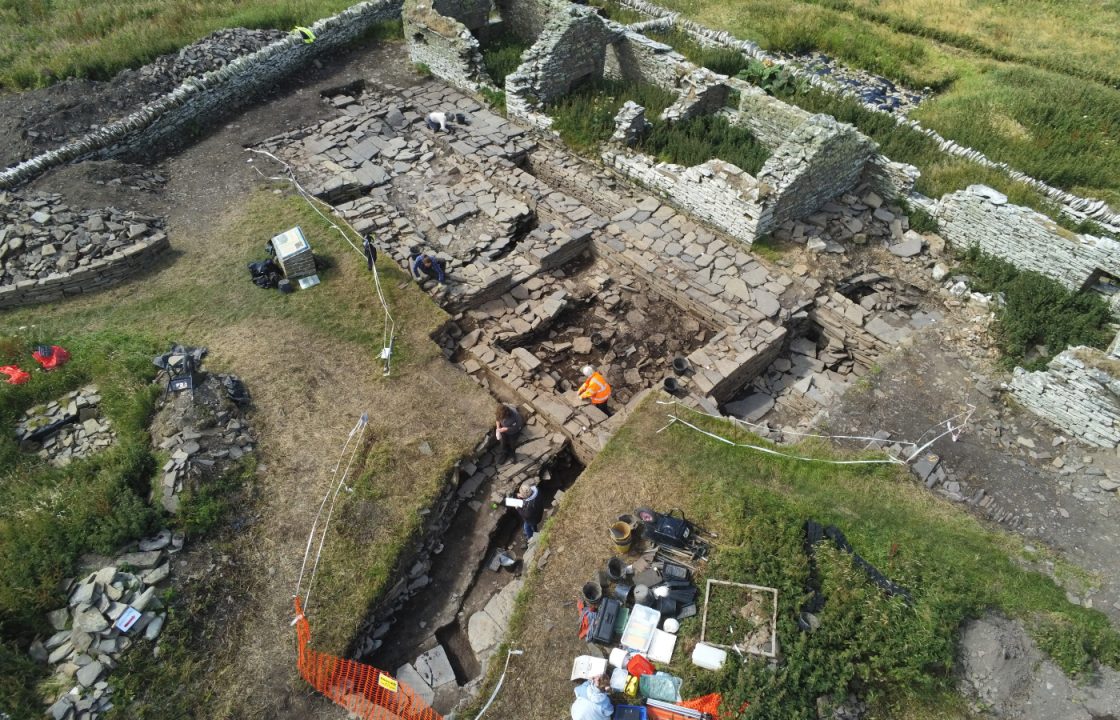 Supplied
Supplied
Medieval Square Building in Centre at Skaill in Orkney (Image Credit Bobby Friel).
Beth Franklin
Share this story
FacebookX / TwitterCopy Link
Posted in
Arts and Culture
A Neolithic “hall”, a Bronze Age ritual cremation cemetery, and an “elite” Iron Age hillfort are among the most groundbreaking archaeological finds in Scotland this year.
Dig It! a hub for Scottish archaeology coordinated by the Society of Antiquaries of Scotland revealed a list of the best discoveries to raise awareness of the work that takes place across the country.
Dr Susan O’Connor, head of grants at Historic Environment Scotland (HES), said: “This list is a great illustration of the archaeological discoveries made in Scotland this year alone.
“These projects highlight the variety and breadth of activity happening across the country, increasing our understanding of how the people, activities, and changes in the natural world over the centuries have shaped our environment today.
“Dig It! offers exciting opportunities for individuals, groups and communities to get hands on with the past and experience archaeology for themselves.”
1. Possible Neolithic Timber ‘Hall’ in Moray
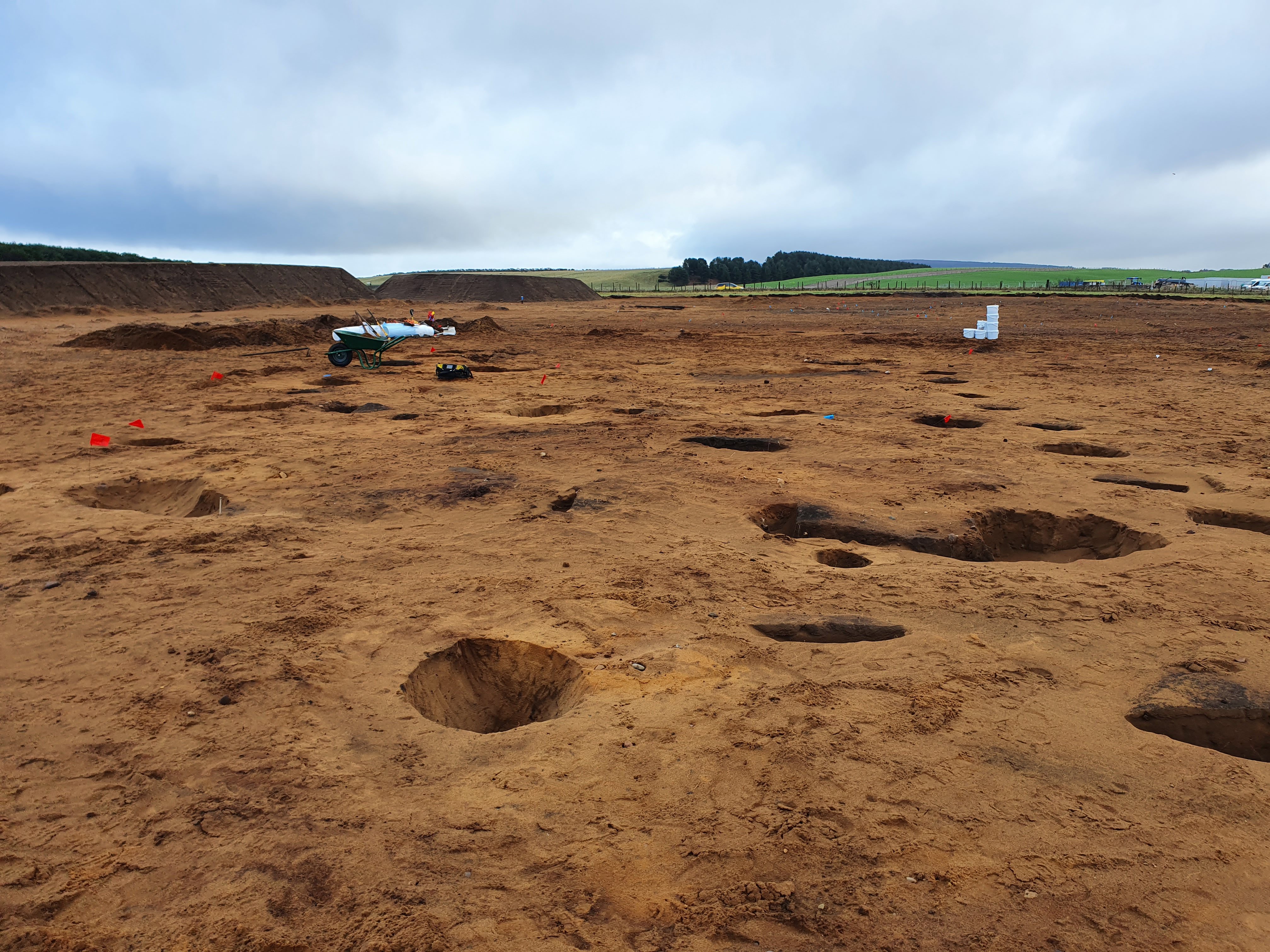 Supplied
Supplied
Postholes and pits at the excavation site of a possible Neolithic timber ‘hall’.
This is not only the first discovery of it’s kind in Moray but it is the oldest discovery of the year.
It was first identified by AOC Archaeology in Portgordon in late 2022 during an evaluation but excavated in 2023.
Archaeologists believe it is a timber hall dating to the Early Neolithic period (4,100 BC to 3,500 BC) as the layout of the postholes and pits (used to hold the structural timbers of the building) resembles other examples found in Scotland.
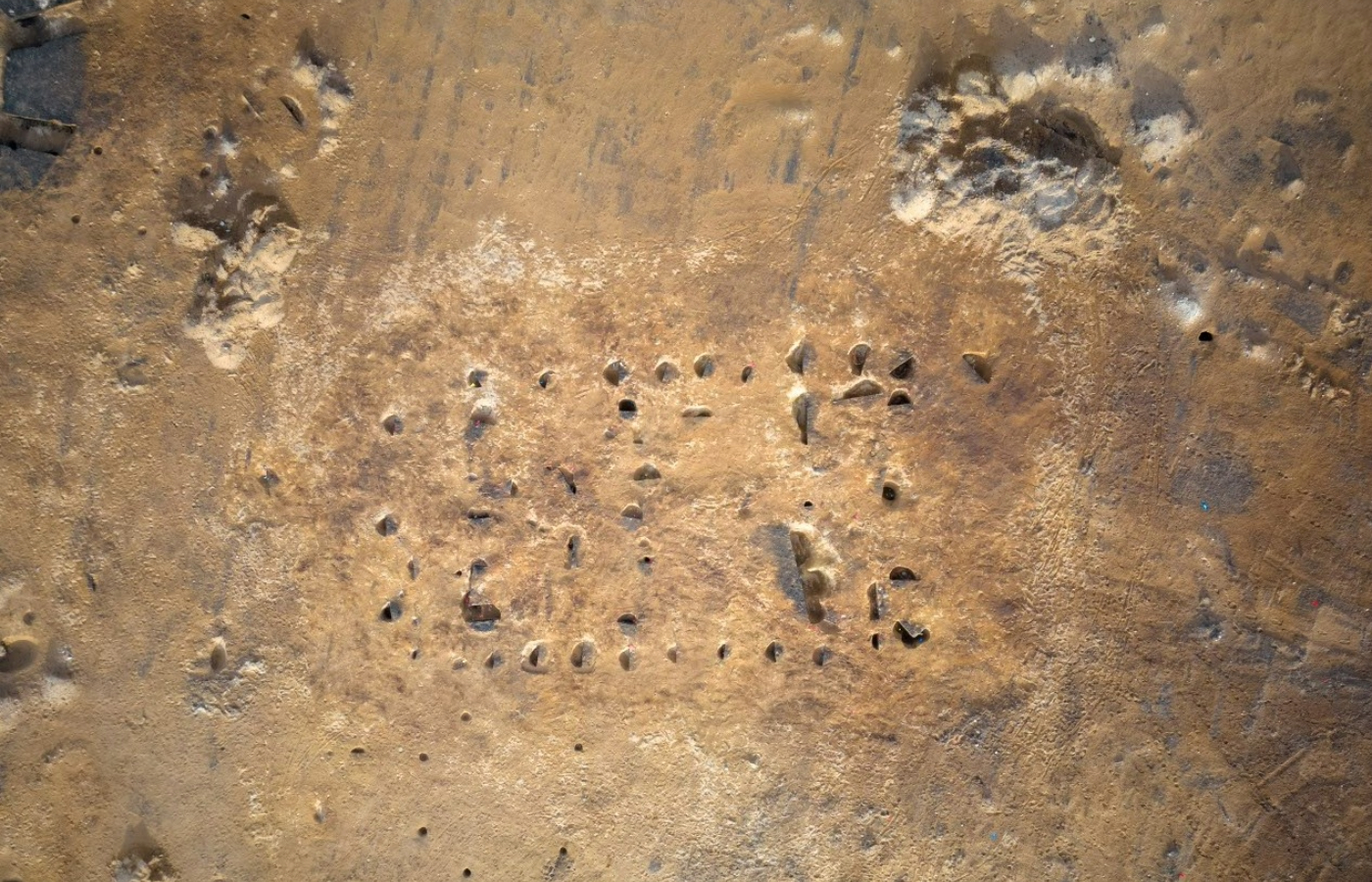 Supplied
Supplied
Aerial view of postholes and pits at the excavation site of a possible Neolithic timber ‘hall’.
More than 240 pieces of prehistoric pottery have also been recovered from the site, including fragments of Carinated and Unstan Bowl – among the earliest type of pots found in Britain.
Yvonne Robertson from AOC Archaeology said: “Whether or not the structure meets the criteria of a timber ‘hall’ or is actually a more everyday ‘house’, it’s a very special contribution to our understanding of Neolithic sites.”
2. Bronze Age discovery at Shetland Spaceport site
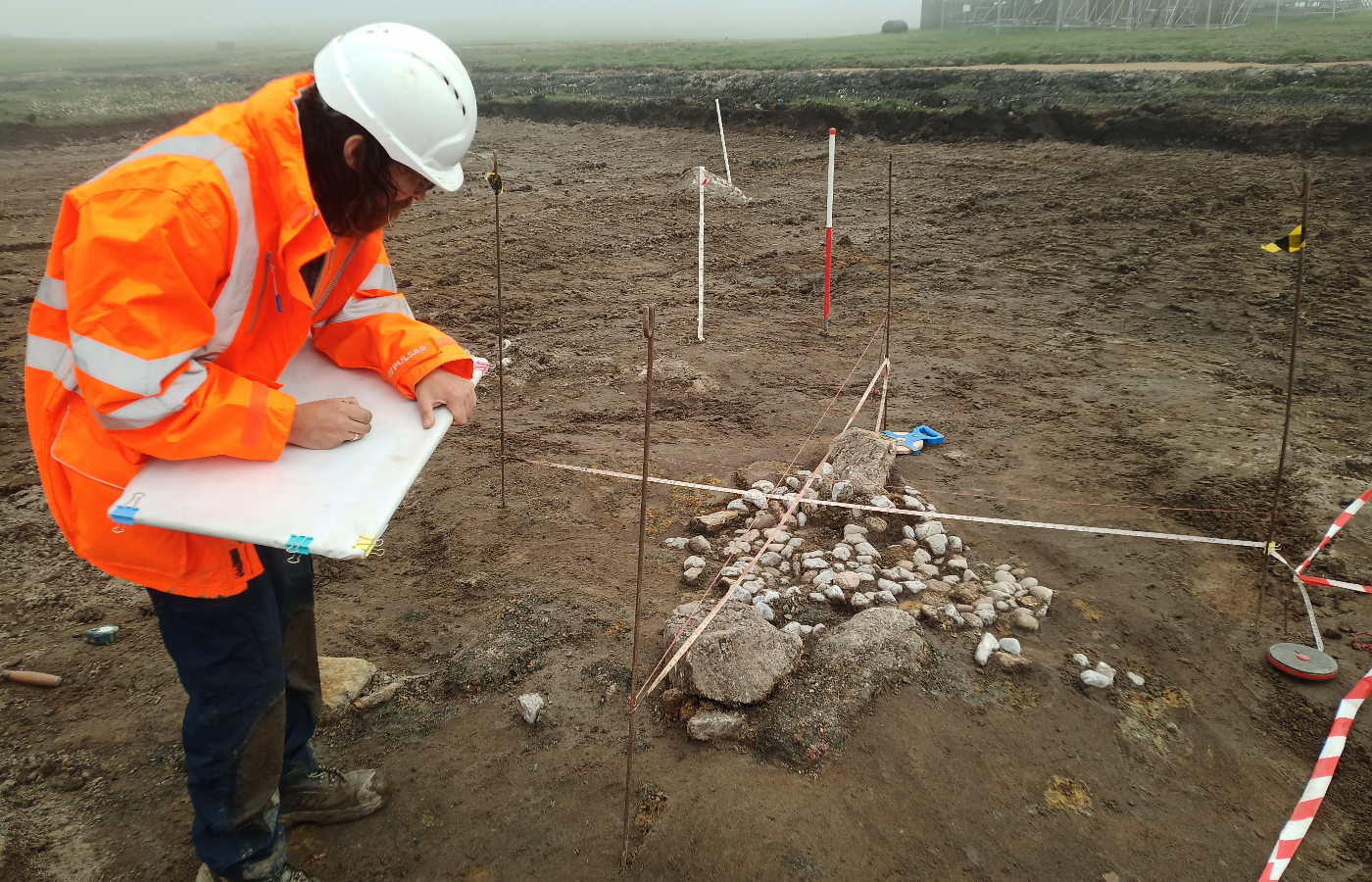 Supplied
Supplied
A collection of stones and quartz pebbles in the ground at the large excavation site of a Bronze Age discovery at Shetland Spaceport Site.
In June, the remains of what may have been an Early Bronze Age ritual cremation cemetery were found at a rocket launch site in Unst.
The discovery was made by AOC Archaeology, who were carrying out a watching brief during groundworks at the SaxaVord Spaceport site.
Several features, including pits, boulders and cremations (surviving as deposits of burnt bone) have been uncovered along with quartz pebbles.
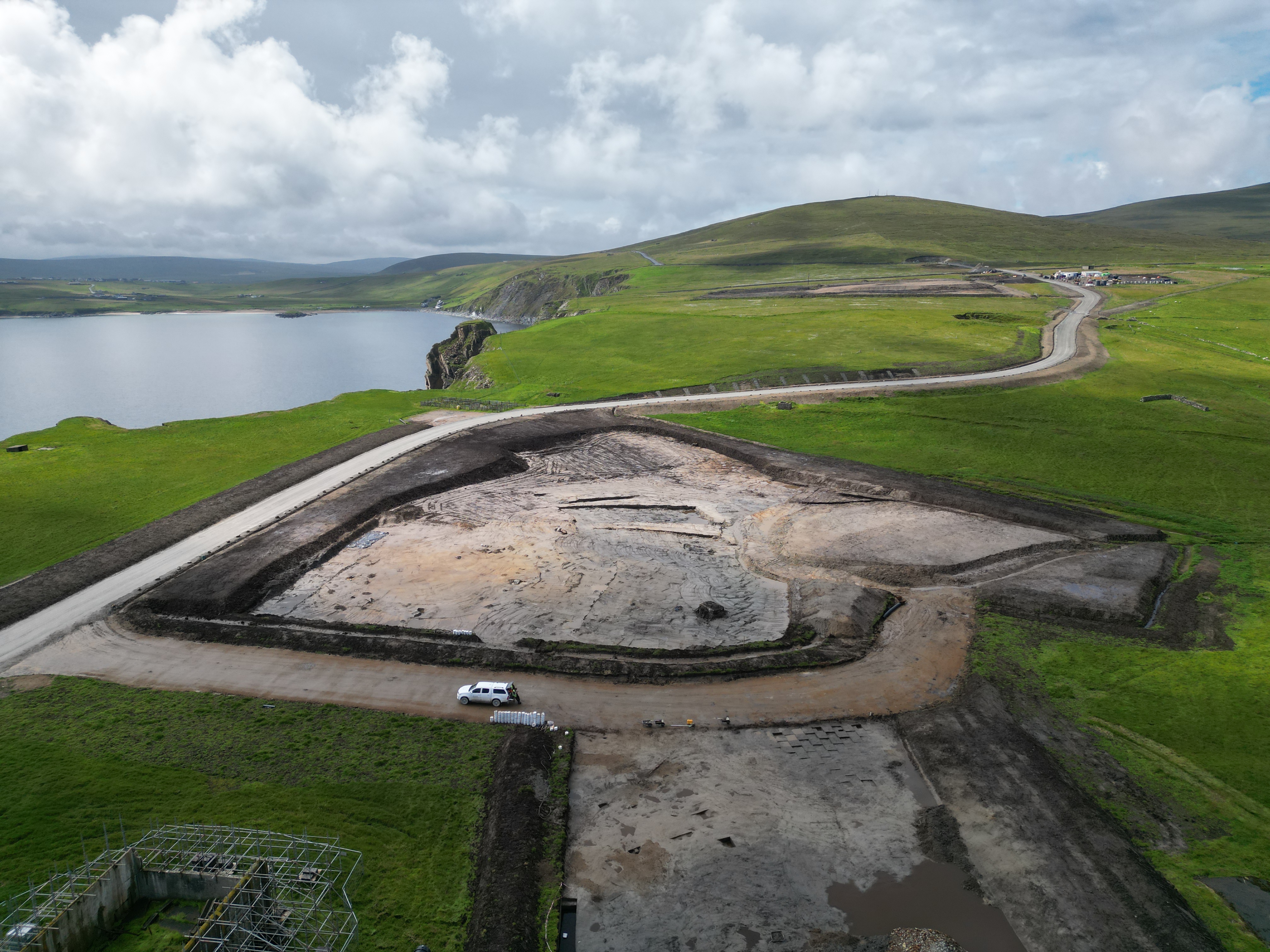 Stuart Munro
Stuart Munro
Aerial view of the Shetland Spaceport site.
These are often associated in prehistory with burial tombs and, in this case, had been used to create a bright white platform. Archaeologists believe the remains may date from around 2,200 BC to 1,800 BC.
According to Dr Val Turner FSAScot, Shetland’s regional archaeologist: “the Bronze Age is perhaps the period of Shetland’s past which we know least about and this is a wonderful opportunity to change that.”
3. Iron Age Hillfort in Stirlingshire
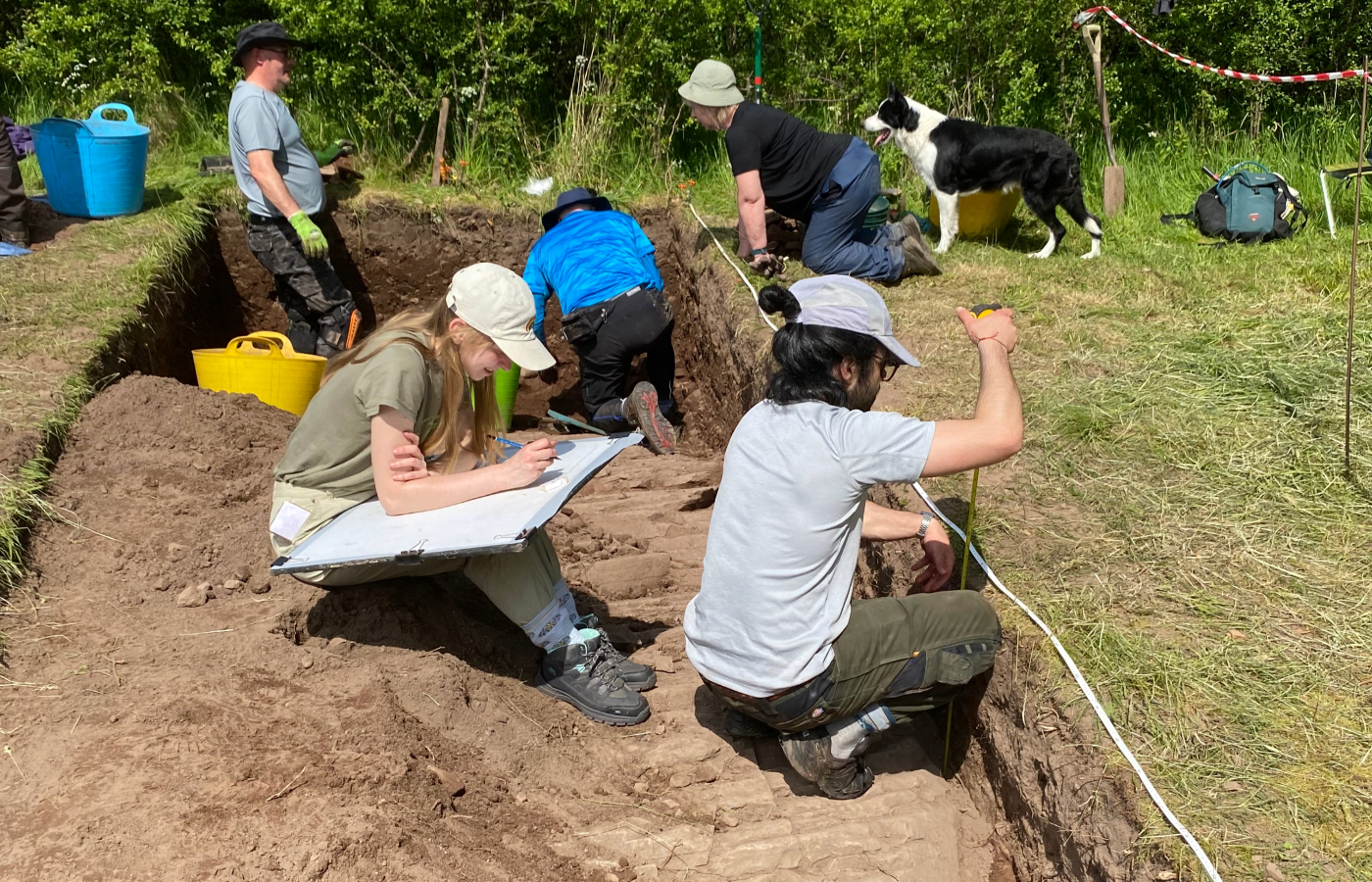 Supplied
Supplied
Iron Age paved surface excavation in Stirlingshire.
One of Stirlingshire’s largest Late Iron Age sites was uncovered at Keir Hill of Dasher in Kippen.
With the help of volunteers, Rampart Scotland and Kippen Heritage have uncovered distinct phases of fortifications at the previously undated site over the last three years, including defensive ditches.
This spring, they unearthed a paved surface over the ditch into the entrance, similar to a causeway.
Thanks to radiocarbon dating of charcoal found in this surface layer, they learned that this period of the hillfort dates to the Late Iron Age (AD 1 to 400).
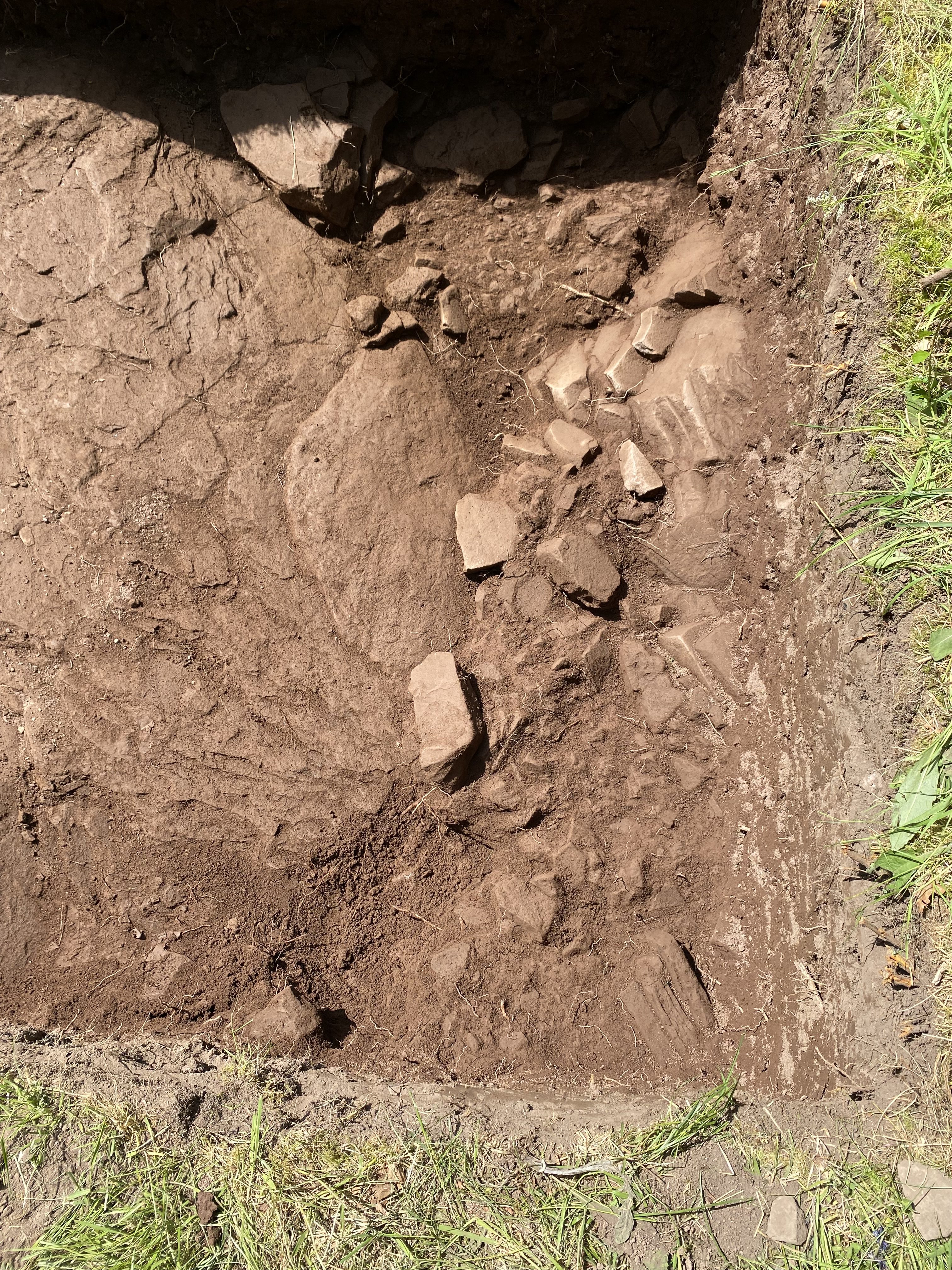 Dr Murray Cook FSAScot
Dr Murray Cook FSAScot
Iron Age paved surface in Stirlingshire.
According to Dr Murray Cook FSAScot of Rampart Scotland: “This elite structure would’ve been used by the locals to express identity and power to each other and the Romans.
“Interestingly, it’s also one of a handful of Iron Age sites in this area that was still in use by the late 2nd and 3rd centuries.
“It’s hoped that the hillfort will therefore reveal more about this enigmatic period of Scottish history.”
4. Evidence of Medieval German Merchants in Orkney
In February, medieval pottery specialists from eight countries discovered traces of Orkney and Shetland’s contact with merchants from Hanse towns (a group of German cities) who expanded into the North Atlantic in the 15th century.
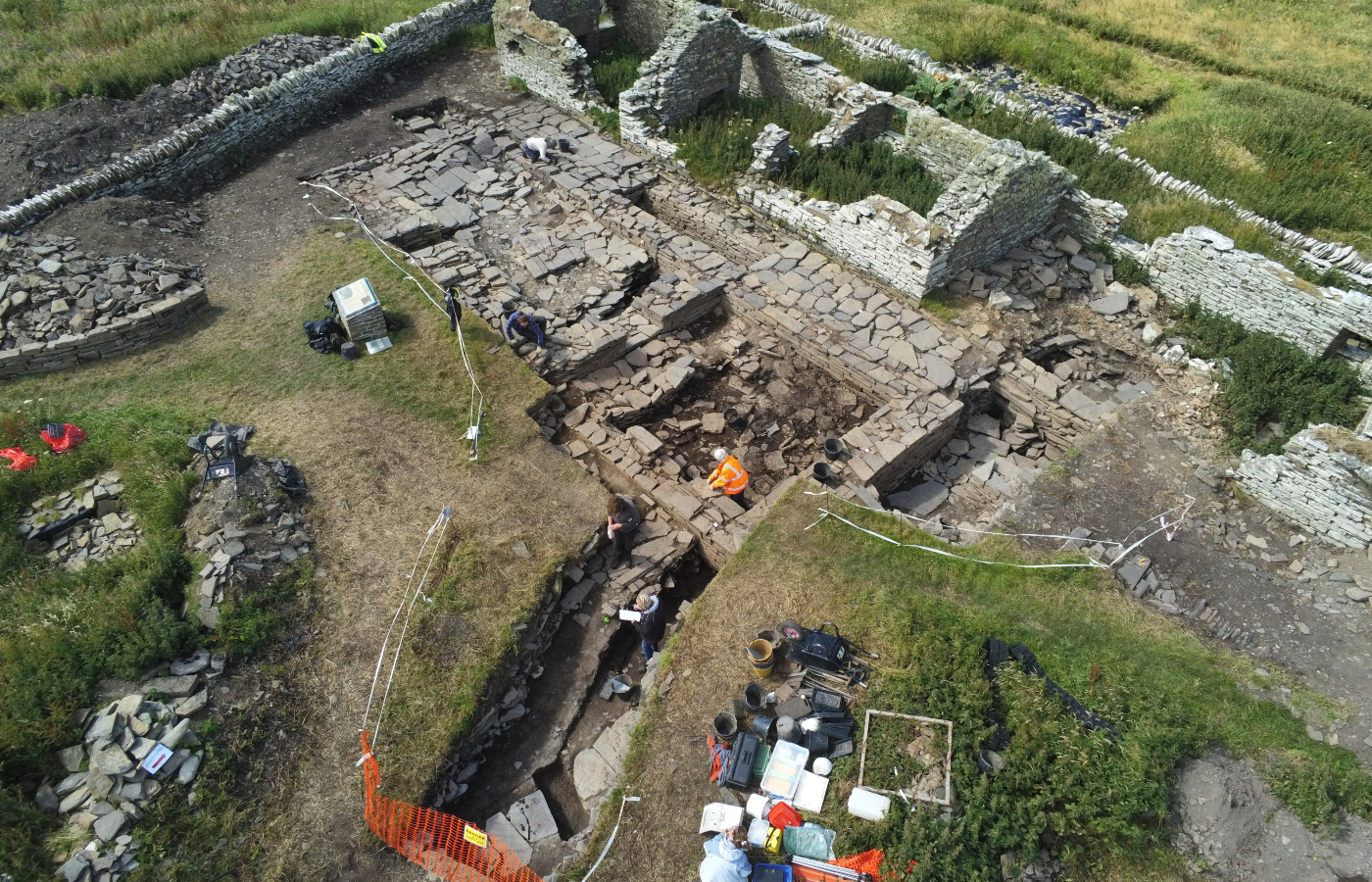 Supplied
Supplied
Aerial view of the Skaill excavation with the medieval square building in the centre.
The German pottery was identified in museum collections in Orkney and Shetland, as well as in recent assemblages unearthed by the University of the Highlands and Islands (UHI) Archaeology Institute as part of the Looking in from the Edge (LIFTE) project.
This includes sherds (pieces) from a late medieval building uncovered in 2023 at Skaill farmstead in Rousay, demonstrating that this rural island was linked to wider European networks.
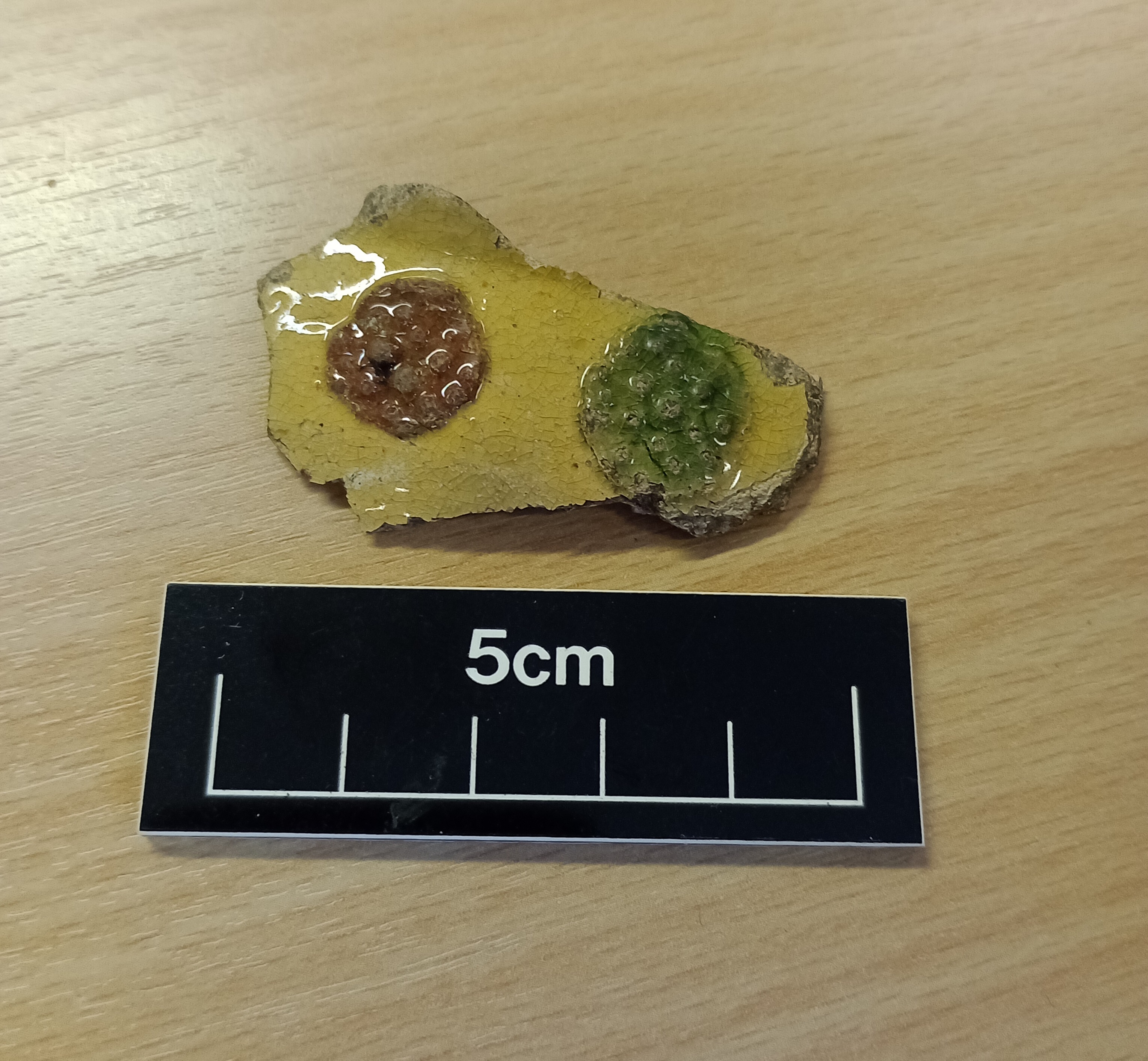 Derek Hall FSAScot
Derek Hall FSAScot
Pottery found at Skaill in Orkney.
According to Dr Sarah Jane Gibbon FSAScot of UHI Archaeology Institute: “merchant activity relating to Orkney during this period is little researched and LIFTE gives us an opportunity to explore the impact of this rapidly changing and expanding world on the islanders’ ways of life, the effects of which can still be seen today.”
5. Rare Cliffside Cableways in Aberdeenshire
In April and May, the SCAPE Trust surveyed and recorded rare iron and steel cableways which were used to lift nets, gear, and fish from coves to the top of steep cliffs at Burnbanks Haven and Portlethen.
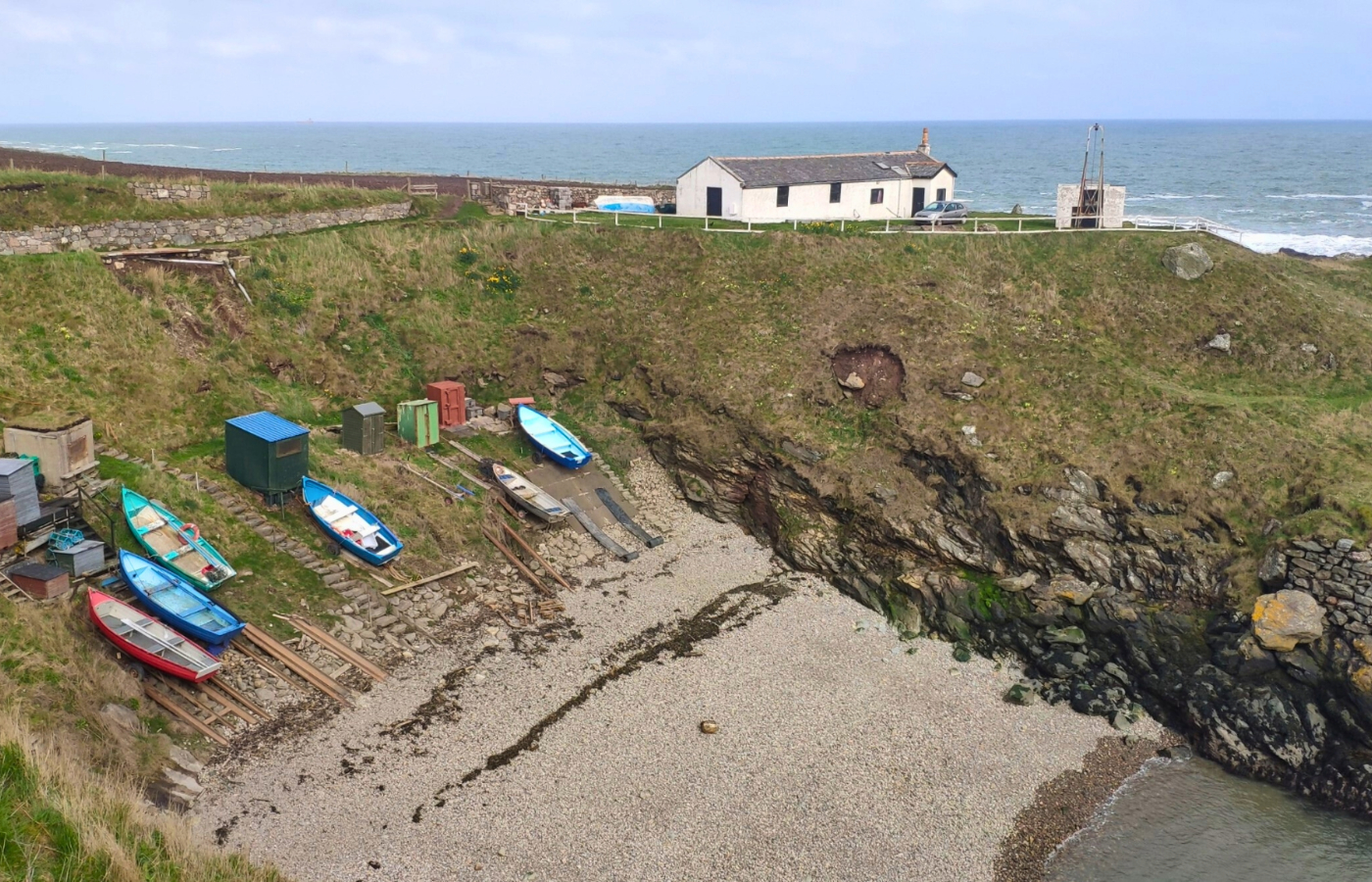 Supplied
Supplied
Fishing station and iron and steel cableways which were used to lift nets, gear, and fish from coves to the top of steep cliffs.
Introduced into quarries in the late 19th century, the technology was borrowed for the fishing industry in Aberdeenshire when natural coves were developed into small salmon harbours.
According to a local resident, they were known as ‘Blondins’, named after the 19th-century French tightrope walker Charles Blondin who famously crossed the Niagara Gorge on a high wire.
The fishing stations are now largely disused, but remaining elements such as these make the sites important for preserving modern fishing heritage.
According to Sarah Boyd, SCAPE Project Officer, “although the site was known, the 2023 surveys have shed light and dug a little deeper into their history, with the help of local communities.”
News
The Hanging Temple: China’s 1,500-Year-Old Cliffside Marvel of Faith and Engineering
The Hanging Temple: China’s 1,500-Year-Old Cliffside Marvel of Faith and Engineering Perched precariously on the cliffs of Mount Heng in Shanxi Province, China, the Hanging Temple, also known as Xuankong Temple, Hengshan Hanging Temple, or Hanging Monastery, is an architectural…
The Willendorf Venus: A 30,000-Year-Old Masterpiece Reveals Astonishing Secrets
The Willendorf Venus: A 30,000-Year-Old Masterpiece Reveals Astonishing Secrets The “Willendorf Venus” stands as one of the most revered archaeological treasures from the Upper Paleolithic era. Discovered in 1908 by scientist Johann Veran near Willendorf, Austria, this small yet profound…
Unveiling the Maya: Hallucinogens and Rituals Beneath the Yucatán Ball Courts
Unveiling the Maya: Hallucinogens and Rituals Beneath the Yucatán Ball Courts New archaeological research has uncovered intriguing insights into the ritual practices of the ancient Maya civilization. The focus of this study is a ceremonial offering found beneath the sediment…
Uncovering the Oldest Agricultural Machine: The Threshing Sledge’s Neolithic Origins
Uncovering the Oldest Agricultural Machine: The Threshing Sledge’s Neolithic Origins The history of agricultural innovation is a fascinating journey that spans thousands of years, and one of the earliest known agricultural machines is the threshing sledge. Recently, a groundbreaking study…
Nara’s Ancient Sword: A 1,600-Year-Old Protector Against Evil Spirits
Nara’s Ancient Sword: A 1,600-Year-Old Protector Against Evil Spirits In a remarkable discovery that has captured the attention of archaeologists and historians alike, a 7.5-foot-long iron sword was unearthed from a 1,600-year-old burial mound in Nara, Japan. This oversized weapon,…
The Inflatable Plane, Dropped Behind the Lines for Downed Pilots
Experimental The Inflatable Plane, Dropped Behind the Lines for Downed Pilots The Inflatoplane from Goodyear was an unconventional aircraft developed by the Goodyear Aircraft Company, a branch of the renowned Goodyear Tire and Rubber Company, also famed for the Goodyear…
End of content
No more pages to load











